|
Peacock Becomes a Mountain
மயில் வாகனம் மலையாக மாறிய திருக்கதை தெரியுமா?
Do you know the story of strutting Peacock becoming a Peacock Mountain?
Kunraikkudi
Shanmuganathar
Temple
Sakti Vikatan
தைப்பூச தரிசனம்எஸ்.கண்ணன்
கோபாலன்
S. Kannan Gopalan
Revised on Aug 5, 2019
We all know Muruga Peruman’s mount is peacock. Purana depicts Sūra
Samhāram (killing of the demon Sūra) by Murugan. The demon morphed into
a tree which Murugan split with his trident and from which emerged the
peacock mount (his ride) and the Rooster Flag.
(The demon could morph into anything he desired.)
If that is so, did Murugan not have a mount? To obtain the Fruit of
Wisdom (ஞானப்பழம்)
from his father (Siva), he circumambulated the world on his peacock
mount, according to Puranas.
Whatever happened to that Peacock Mount?
|
 |
Since Murugan was of beautiful form, he took the peacock as his mount.
Against the peacock that emerged from the tree-demon, Murugan
levelled a curse, which transmuted the peacock into a mountain.
The peacock that transmuted into a mountain observed severe penance
beseeching Murugan’s grace. The
mountain was of the shape of the peacock in Kunrakkudi. |
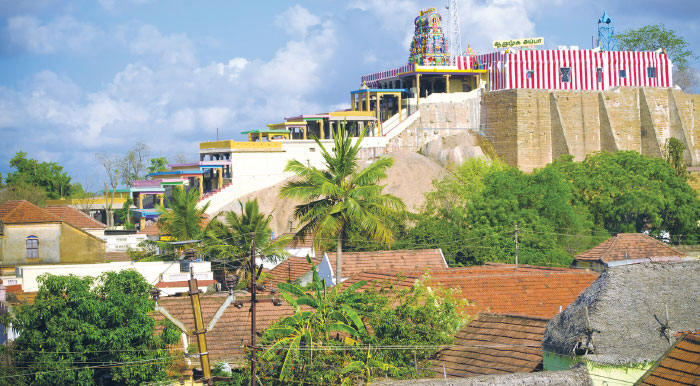 |
|
The story of transmutation of peacock to a mountain
Isan the prototype of Eternal Wisdom is immersed deep in eternal
silence. He split his Sakti into two parts: 1st, Bhoga Sakti (Pleasure
Principle) and the 2nd the Divine God Muruga.
By inscribing the power of Wisdom (Jñānasakti)
in his heart, Isan gave Iccha Sakti (Will) and Kriya Sakti (Action) to
Murugan. Murugan goes by
multiple beatific names: The Repository of Jñānasakti,
Gukan (Cave Dweller), Visākan
(2nd lunar month,
and 16th nakṣatra).
Isan established a temple for him on the left side of Kailas and
enjoined him to do pañca-kiruttiyam (ஐந்தொழில்
=
five functions).
ஐந்தொழில்
= ai-n-toḻil = pañca-kiruttiyam: Five functions of God. =
பஞ்சகிருத்தியம்
=
The five functions of God, designed by Divine Grace for the deliverance
of the souls, viz., ciruṭṭi,
titi, caṅkāram, tirō- pavam, aṉukkirakam ( = Creation, Maintenance,
Destruction, Obscuration, Grace)
The Primeval gods (Brahma, Vishnu, Rudra…) who came to pay homage to
Aṇṇal
(Great God, Siva) who drank poison (to save the world), paid homage to
Lord Murugan. When they saw the strutting peacock there, they felt
compassion towards it. Reason?
Demon Sūra
with his brothers was doing austerities in Kanchi. The aim of their
austerities was to transmute and become the mount of Lord Murugan: It is
an honor to serve as the Mount of Murugan. If
they fulfilled the desire of their penance, what is the status of the
erstwhile peacock? Having
considered these possibilities, the Brahmādi
Devas (Primeval gods: Brahma, Vishnu, Rudra… ) felt sympathy to the
peacock. The devas departed informing the peacock, “ Sura and his
brothers are engaged in severe penance in Kanchi, wanting to become the
Peacock Mount of Lord Murugan.”
Hearing the bad news from the Devas, the peacock meditated on Lord
Murugan to alleviate his mental anguish.
Sympathetic to peacock’s predicament and impressed with the
supplication, Lord Murugan appointed Sūra and his brothers as his Gaṇas
(attendants) and kept them close to him.
Though Sūra and his brothers did not have the good grace to become the
Mount of Lord Murugan, they became angry with the gods who revealed the plans to the peacock. They looked forward to the day to
reap vengeance. That day came. |
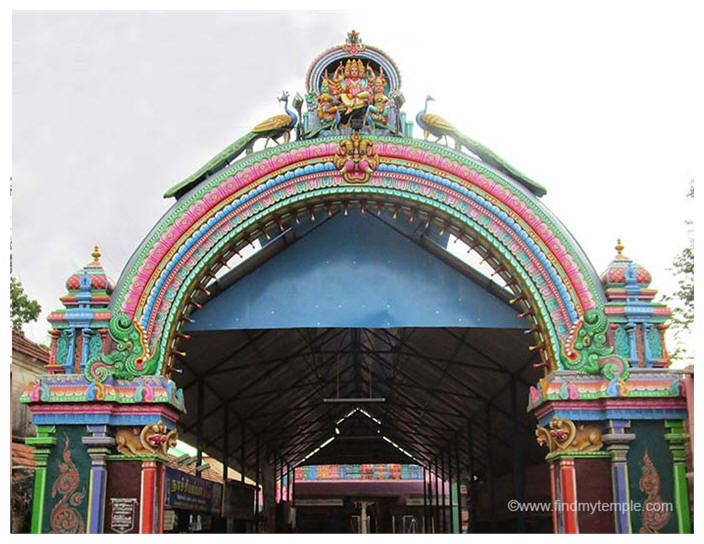 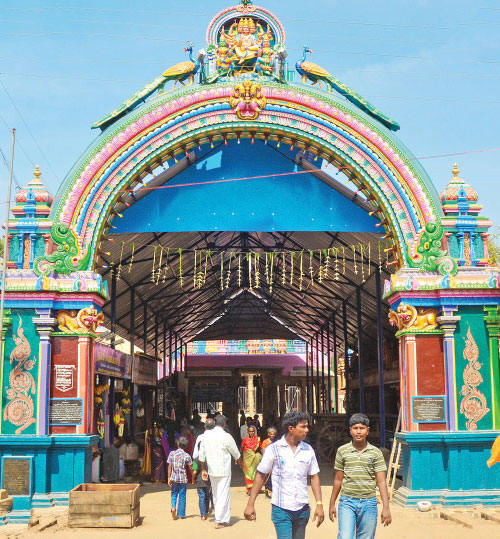 |
|
Tirumal and Brahma came to offer homage to Lord Murugan, leaving their
mounts Garuda and Swan outside.
The Sūra brothers, bearing false testimony, said to the peacock,
“The Swan and the Garuda dishonored you saying you could not fly faster
than they could.” |
|
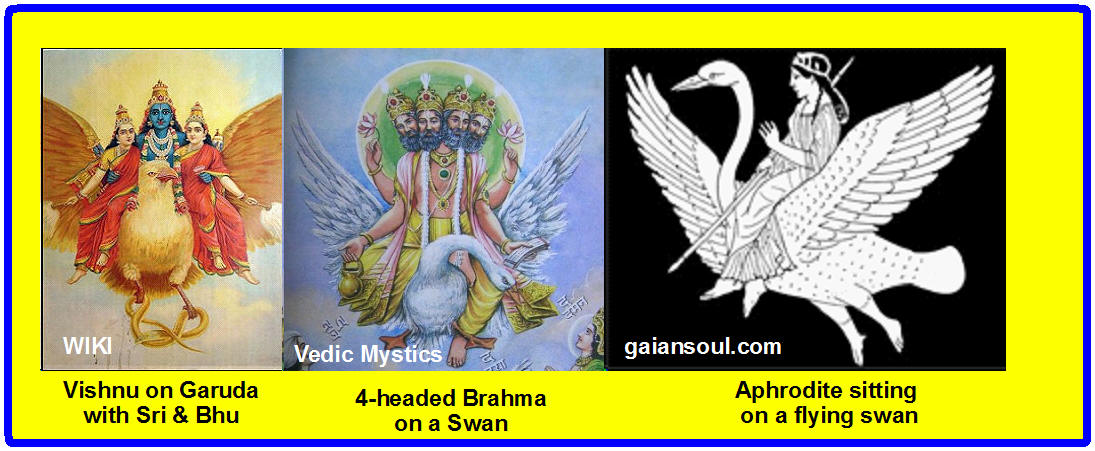
Hearing this, not taking a moment to reflect and in a fit of anger, the
peacock swallowed the Swan and the Garuda.
Returning to where they parked their mounts and not finding them,
the worshipful Tirumal and the four-faced Brahma complained to Lord
Muruga of disappearance of their mounts
(WMR1). Muruga Peruman ordered the
peacock to regurgitate the birds, which it did and whom Tirumal and
Brahma mounted and left the premises.
For causing difficulties to the duo, Lord Muruga became angry with the
peacock and cast a curse on it to transmute into a mountain.
The peacock feeling unhappy and regretful about its hastiness and
thoughtlessness, asked for relief from curse. Compassionate and loving
Lord Muruga realizing peacock’s remorse offered grace and release from
the curse saying, “Go to Kunrukkudi’s royal gardens south of
Tiruppaththur in Pandiya country and remain there as a mountain. I will
see you there in the future and give you release from your curse.”
Kunraikkudi-GoogleMap.jpg
Kunraikkudi.jpg
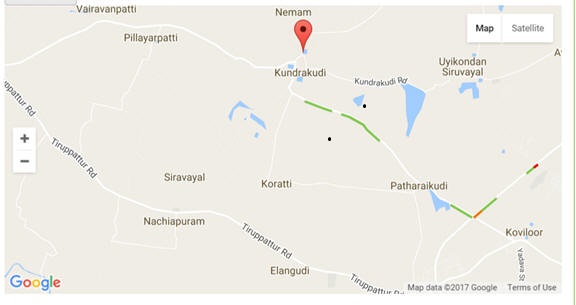
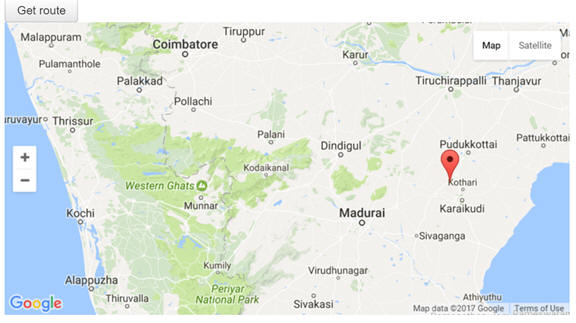
So, the peacock came to Kunrakkudi assumed the form of a mountain with
its face to the north looking at Lord Murugan and its feathers to the
south and immersed itself in austerities.
Lord Muruga cast a curse on the Sūra brothers to become Asuras
(anti-gods, demons, degraded cousins of gods, Dasypygal Daityas), because they were
responsible for the present condition of the peacock. They roamed
everywhere haughtily causing difficulties to Devas and Munis.
Blessed by the grace of Siva, Lord Muruga came into being bearing
six faces and destroyed the Asuras.
He made Sūra the peacock a Mount and the rooster the flag.
Having been ordained by Siva, Lord Muruga was of the mind to offer grace
to the cursed peacock-mountain in the state of severe penance.
Appearing in Kunrakkudi, he split the mountain into two parts,
offering
Sārūpya Mukti2
state to one part and the other to remain a
mountain. The peacock
released from the curse asked for a Varam (boon) saying, “O Lord Muruga,
continuing your offering of grace, please take residence on the mountain
and offer grace and boon to the devotees who come seeking you on the
mountain.” In that spirit,
Lord Muruga took residence on the Kunrakkudi mountain with Valli and
Devasena as companions (consorts).
Shamuganathar.jpg

Kunrakkudi is located 8 KM from Karaikudi on Karaikudi-Tiruppathur
Highway. The mountain is smack
in the center of the town standing high, Rajagopuram facing south and
titillating our thoughts, vision, and imagination. The holy temple is of
two parts. One is lower temple, wherein Tenarru Nathar and Azakambikai
offer grace facing south. Lord Muruga offers grace on the mountaintop. |
| |
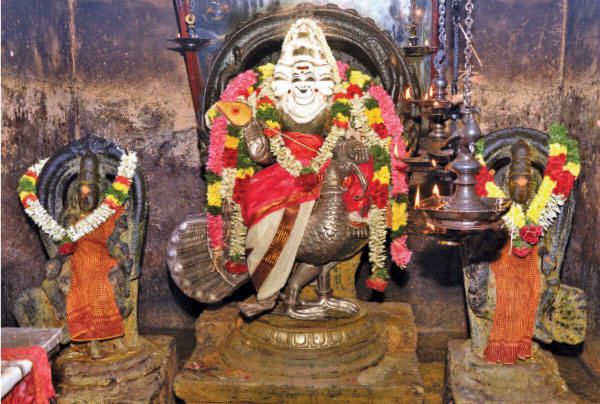 |
In the foot of the mountain, due south of shrine of graceful
Shanmuganatha Peruman, there is the ‘Sannidhi Vinayakar’ Temple.
To the south of Vinayaka Temple, consecutively in a row, there
are the one-pillar Mandapam and the beautiful Shanmuga Tīrtham (sacred
pond).
The below four images are from
https://wn.com/kundrakudi_lord_muruga_as_shanmuganathan_~ |
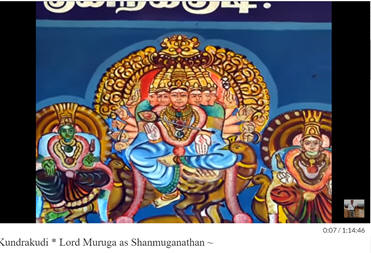 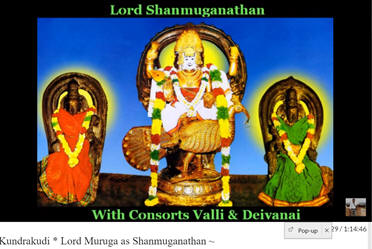
Shanmuganathar with Valli and Devayanai
----------------------------------------------------------------
The foursome Nayanars below: Appar, Sambandar, Sundarar and
Manickavasaakar. art on the wall as background
|
|
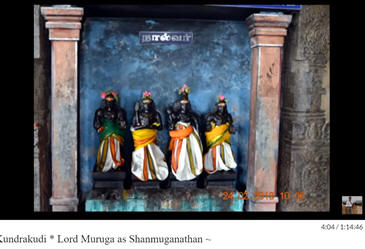
Having Dharsan of Sannidhi Vinayakar, we proceed to mountaintop temple
through the decorated entrance.
Past the entrance at the foot of the hill, there is the
Thokaiyadi Vinayakar in the northwest corner.
At the mountain entrance, there is the Kārttikai Piḷḷaiyār
Mandapam, wherein Piḷḷaiyār is facing south.
As you go up, there are the Tani Mandapam and water Mandapam.
Going past, there is the Idumban Temple.
To the west, there is the Vallabha Ganapathi shrine. Paying
homage to him, and going to the next Mandapam after an ascent of 149
steps, we arrive at a flat platform.
The mountaintop shrine’s path of circumambulation has a Piḷḷaiyār
statue known as Sorna-Ganapathi for Dharsan and worship.
Beautiful artistic work
Muruga Peruman, remaining in the Mountain Temple’s sanctum sanctorum,
with his six faces, and 12 holy hands, has descended to embrace the
devotees, sits on the peacock nattily, faces south and offers his
gracious presence. The
peacock carrying the six-faced god faces north.
On either side of the six-faced Lord are Valli on his right and
Deyvanai on his left both seated on the peacocks offering grace.
It is very rare to experience such Darśan anywhere.
Muruga’s peacock mount, Tiruvasi (the arch, aureole, Nimbus), and
Mulamurtham (The fixed statue of god) are a one-piece metal sculpture.
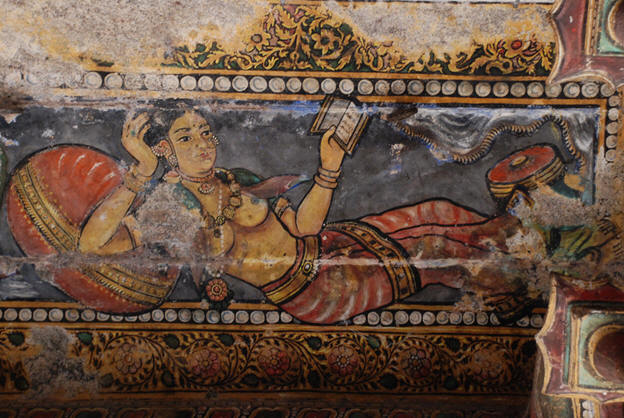
Maruthu
receiving Muruga’s Grace.
That was the era when MarthuPandiya brothers ruled the Sivaganga island.
The elder Maruthupandiyar developed an abscess. Muruga devotee Kādan
Chettiar on the recommendation of an elder supplicated to Kunraikkudi
Murugan and offered the sacred water to the king.
That night a young Sannyāsī had a dream as follows. He came with peacock
feathers, extirpated the abscess, put it on the plantain leaf, and
applied holy water on it. The dream woke the Sannyāsī up and came true
in all its aspects and he was happy that the severe pain went away
completely.
In a few days, having recovered fully from his illness, Maruthu Pandiyar
went to Kundraikkudi with the Chettiar and his attendants, offered
homage and worship to Shanumuganathar and performed a multitude of holy
services.
|
| |
|
The god restored
(gave where there was none) the
speech.
Senthilvelu son of Sundaravelu Mudaliar and Nilayathatchi Ammal
in the town of Kizparappai near Chidambaram had congenital absence of
speech from birth (Mutism). He was
seven years of age in 1973 and yet did not speak.
The parents were distressed very much and made a solemn promise (நேர்த்திக்கடன்) to Kunraikkudi
Shanmuganathan to perform service to him every month on the day of
Rohini birth Star of his son.
நேர்த்திக்கடன் = நேர்த்தி
+ க் + கடன் =
Vow + debt. Vow to pay back debt in the form of service to the Lord in
expectation of a gracious gift (or fulfillment of desire) from the Lord.
To make it simple, it is as follows. You want to buy an expensive
jewelry. You pay the price in instalments and get the jewelry on giving
the last instalment. When you pray to god you have a need. If there is
no need (No one is free of some need), why are your worshipping the god?
In Hindu religion, it is normal to ask god for favors in return for
services. Remember we are children of god. When was the last time a
child did not ask for something from the parents?
Grandfather Chokkalinga Mudaliar took his grandson Senthilvel 11 times
consecutively to Kunraikkudi Shanmuganathar.
The 12th time on the day of Rohini star coming to
Kunraikkudi, he worshipped the graceful Shanmuganathar with his melting heart,
desirous mind and merging soul and looking at his grandson said, “go say ‘Om Muruga’.”
The youngster was efficient and keen on lipreading his grandfather. In the sanctorum
at that moment, the screen opened revealing the gracious and shining
face of Shanmuganathar in the brightness of the waving lights.
From the mouth of the youngster,
came the sweet and soft sound of Mantra “Om Muruga.” From then on, he
spoke articulately.
To this day, the miracle continues happening…Kunrakkudi Kumaran’s dance
of grace and wonder.
Photos: S. Saidharmaraj
|
WMR1:
“Where's My
Ride”
(WMR) allows you to check the location of a vehicle 15 minutes before
your scheduled time. You can use the system with a smartphone, computer,
tablet, and an older flip phone (SMS). The Santa Clarita region will be
available by Spring 2019 and the Antelope Valley region by Summer 2019.
Sārūpya Mukti2
Prof. Shastri: Śivapurāṇa
Volume 1 page 45. Motilal Banarsidass publishers.
The devotee attains exemption from further transmigration and his
identification with the deity, gradually through four stages. Sālokya =
Being in the same world with the deity. Sāmīpya =
nearness to the deity. Sāyujya =
Intimate union with the deity. Sārūpya =
assimilation to the deity. Sārṣṭi =
equality in rank, condition or power as one of the grades of mukti.
Page 62. Siva Purana Volume: 1.9.26-27: Siva says: "Worshipping Me in My
supreme Linga form at this place and performing the other sacred rites
shall accord the five types of salvation-- Sālokya, Sāmīpya,
Sārūpya,
Sārṣṭi and Sāyujya. May
all of you achieve all your cherished desires.
|